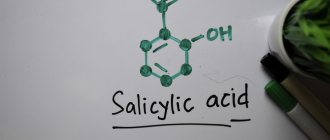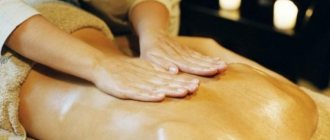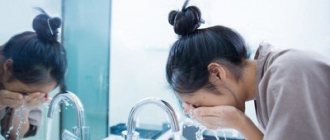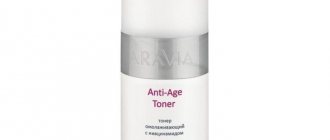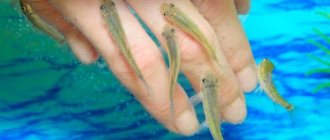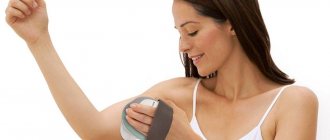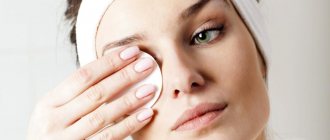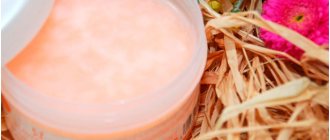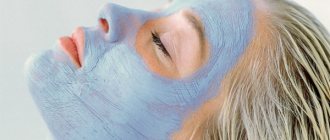Cryotherapy is actively used in dermatology to treat the scalp and restore hair health. The technique is safe for the body, but should only be performed by qualified specialists. In this case, it is possible to achieve the maximum effect from the use of liquid nitrogen and significantly improve the external condition.
At the Healthy Family clinic, cryotherapy is one of the popular methods for treating alopecia and other diseases associated with hair and scalp. Sometimes patients require additional consultation with specialized specialists in order to completely solve the problem and avoid recurrence of identified disorders in the future.
The effect of cryomassage of the scalp
Hair treatment using cryotherapy occurs due to the normalization of blood circulation in blood vessels, active nutrition of tissues and cells, improvement of metabolic processes in the skin, activation of the immune system, as well as stimulation of the neurohumoral and endocrine systems. Thanks to the anti-inflammatory, exfoliating and rejuvenating properties of liquid nitrogen, the patient is no longer bothered by itching of the scalp, and the severity of oily seborrhea is reduced. As a result, there is an increase in hair density, absence of discomfort, and cessation of hair loss. Hair becomes shinier, stronger and healthier to the touch and visually. In addition to the effectiveness of cryomassage, this procedure is absolutely painless, safe and quite pleasant.
How is the procedure performed?
Cryomassage for hair is a very simple and useful technique that does not require special training from the patient. The procedure execution algorithm looks like this:
- Before starting a massage in a beauty salon, a cold test is performed on the patient. A swab soaked in liquid nitrogen is briefly applied to the sensitive area of the skin and the reaction of the epidermis is observed. If severe redness and itching occurs, the procedure will have to be abandoned. If no negative consequences are identified, you can proceed directly to cryotherapy.
- The patient sits down or takes a horizontal position. The master either takes a special applicator with a swab moistened with liquid nitrogen, or arms himself with a cylinder with a spray nozzle.
- For 10-15 minutes, the cosmetologist treats the scalp along several parting lines. The patient's hair is first separated into small strands so as to clean the surface of the epidermis as much as possible.
- The impact on each parting line lasts for 5-7 seconds, the treatment is repeated 3-4 times during the session.
We recommend reading: Hair perm: benefits and harms, contraindications
The beneficial procedure of cryomassage usually does not cause any discomfort. The patient is not given preliminary anesthesia. When cryotherapy is performed correctly and in the absence of contraindications, a person should feel only a pleasant chill, quickly replaced by a feeling of warmth.
For hair loss, cryotherapy is recommended to be carried out in courses of 20 sessions every 2-3 days
Indications for cryotherapy
Treatment with liquid nitrogen allows you to achieve maximum therapeutic effect for the following diseases and disorders:
- Androgenetic alopecia (baldness) in middle-aged women and men;
- Slow hair growth;
- Dandruff, oily seborrhea;
- Sensitive skin, constant itching of the scalp;
- Hair loss or weakening due to weight loss or stress.
Depending on the nature and causes of the pathological condition, cryomassage of the head can be used as an independent procedure or in combination with other therapeutic methods.
Features of cryotherapy
Cryomassage of the head is based on the use of liquid nitrogen. Low temperature exposure causes alternating contraction and dilation of blood vessels. This leads to a comprehensive healing effect on the hair follicles and the hair itself:
- cells are saturated with active oxygen;
- the flow of nutrients to the bulbs increases;
- hair begins to receive more oxygen, vitamins and microelements, which causes its strengthening and natural improvement in appearance;
- All metabolic processes are accelerated and high-quality blood circulation is restored for a long time.
Cryotherapy can be combined with other cosmetic procedures, including darsonvalization. You can learn more about the possibility of combining the use of liquid nitrogen with other methods for healing the scalp and hair from the specialists of our clinic.
Restrictions on cryomassage of the head
Cryomassage, like any therapeutic procedure, has a number of contraindications. These include:
- Pregnancy;
- Thrombosis;
- Epilepsy;
- Migraine;
- The presence of affected areas of the skin;
- Pathologies of the cardiovascular system;
- Oncological diseases;
- Mental disorders;
- The presence of inflammatory and infectious processes in the active stage.
To avoid the adverse effects of cryomassage on the body and to detect the presence of possible contraindications, the patient undergoes a preliminary comprehensive examination (examination by a dermatologist, laboratory tests, general clinical examinations).
Method of performing cryomassage of the scalp
Cryomassage does not require special preparation. The procedure lasts 5-10 minutes. The course of treatment is 10-15 sessions.
Treatment of the skin is carried out with a special long wooden stick on which cotton wool is wound. The cryomassage device is equipped with various attachments, which vary depending on the specifics of the procedure and the nature of the disease. The procedure is carried out with light massage movements, which allows you to activate the circulation of blood cells.
The patient should be prepared for the fact that hair fragility and hair loss may occur immediately after completion of cryomassage. These phenomena are considered normal and pass quickly enough. Comprehensive cryomassage with various therapeutic procedures will help to achieve the most effective treatment. Often, along with a course of treatment with liquid nitrogen, the patient is prescribed medications to strengthen nails and hair.
In any case, the tactics and methods of treatment are determined by a qualified specialist based on the results of a comprehensive diagnosis, taking into account the condition and individual characteristics of the patient.
Liquid nitrogen used in cosmetology
The procedure involves the impact of liquid nitrogen in the form of ice on problem areas of the skin that require corrective intervention (skin with cellulite, sagging skin, stretch marks).
The effect of liquid nitrogen on the skin manifests itself as follows: blood flow slows down, blood vessels constrict, and the nervous activity of cells in the body sharply decreases. The process of improving blood circulation occurs, metabolism accelerates, skin cells receive more beneficial substances (vitamins, microelements, various types of amino acids). In this case, the patient does not feel pain, in some cases there is a feeling of cold and slight tingling in the area of impact.
Facial cryotherapy or cryomassage using liquid nitrogen is carried out with a special applicator along strictly defined massage lines on the face, as well as on problem areas of the skin of the whole body.
Most patients, after finishing the cryotherapy procedure, feel like their skin is “breathing”, which is the right feeling, because the process of exfoliation of dying cells occurs in the upper layer of the epidermis. Therefore, after cryomassage, the face radiates a beautiful, healthy glow, freshness and evenness of the skin structure above all praise.
After cryomassage of the head
There are no restrictions after treating hair with liquid nitrogen. As a rule, the cryomassage procedure is well tolerated by patients, without adverse complications. Often, after cryomassage some side effects appear (frostbite, redness, irritation, etc.). Their appearance may be due to non-compliance with the technique of the procedure or underestimation of the seriousness of contraindications.
You can undergo a course of treatment with liquid nitrogen under the guidance of highly qualified and experienced specialists in our specialized medical center.
Attention!
This article is posted for informational purposes only and under no circumstances constitutes scientific material or medical advice and should not serve as a substitute for an in-person consultation with a professional physician.
For diagnostics, diagnosis and treatment, contact qualified doctors! Number of reads: 4497 Date of publication: 09.09.2018
Dermatologists - search service and appointment with dermatologists in Moscow
GUIDE TO CRYOSURGERY for general practitioners
What principles should cryosurgeons follow? What benign formations are subject to cryosurgery? What are the main side effects of cryosurgery procedures? What is the best way to organize a cryosurgery department in general practice?
It is well known that cryosurgery is easily adaptable to the capabilities of general practice, and the number of general practitioners offering cryosurgery procedures to their patients continues to grow. This trend may have been initially supported by additional payments to general practitioners for performing minimal surgical procedures, but today the effectiveness of dermatological cryosurgery in primary care and the availability of liquid nitrogen play a major role.
The doctor must have a clear understanding of the basic principles of cryosurgery. Inadequate treatment of even benign skin lesions often leads to complications, and an unjustified choice of treatment for malignant tumors can have very serious consequences.
Table 1. Surface tissue temperatures achieved using various cryogens
| Cryogen | Temperature (0C) |
| Dry ice | –79 |
| Nitric oxide | –75 |
| A liquid nitrogen | –20 (cotton-wool swab) –180 (spray) –196 (probe) |
Cryogen and operator.
A number of cooling agents have been used in clinical practice in the past. In table 1 shows the types of modern cryogens along with the corresponding decrease in surface temperature during their action.
For the treatment of benign superficial skin formations, a temperature of -200C is sufficient; malignant neoplasms require more severe regimes - up to -500C.
Liquid nitrogen, whose boiling point is –1960C, has the highest “deadly” subzero temperature for tissue destruction. Dry ice and nitric oxide provide adequate subzero temperatures for benign growths or superficial areas of sun-damaged skin such as solar keratoses, but are not as good as liquid nitrogen for destroying malignant skin growths.
| Figure 1. Application of liquid nitrogen using a cotton-wool swab. Freezing extends to an area of normal skin within a radius of about 1 mm |
Due to its availability, liquid nitrogen is often used in cutaneous cryosurgery. There are different freezing regimes recommended for different skin lesions.
Cryosurgery using dry ice and nitric oxide requires a longer exposure time than with liquid nitrogen, which should be kept in mind by clinicians transitioning from dry ice and nitric oxide to liquid nitrogen; to avoid side effects and complications.
It is also important that the operator is “experienced” in the treatment of benign tumors before moving on to the treatment of precancerous and cancerous tumors.
If there is no certainty about the origin of the tumor or a preliminary biopsy has not been performed, the cryosurgical method cannot be used.
The supply of liquid nitrogen can be arranged from several sources. Most suppliers of equipment for cryosurgery include in the contract the supply of flasks with liquid nitrogen of various volumes to the customer.
The pharmacy department of the local main hospital is usually happy to provide liquid nitrogen. In this situation, it is best to organize a group of patients in a permanent department, so that liquid nitrogen is delivered, say, once a month in a special transport container with a protective container.
The author has his own 50-liter Devar flask, which is replenished by the supplier every six weeks.
Cryofreezing.
Regardless of the equipment and method used, a white ice field forms on the surface of the skin during cryofreezing. Subsequently, deeper tissues are involved in the freezing process (Fig. 2).
| Figure 2. Open 30 second spray of freezing spots. Note the shape of the ice field, the attainment of lethal temperatures at a depth of 3 mm, and the lethal spread of freezing approximately equal to its depth* |
Histologically, cryofreezing causes ischemia and necrosis through direct cell injury, thrombosis, and microvascular failure. The faster the cooling, the lower the temperature achieved, and the slower the thawing, the more cells die.
The extent of tissue damage is related in part to the duration of freezing, but other factors are also important. Different cells, tissues and organisms have different intrinsic sensitivity to cold (Table 2). Melanocytes and basal cells die easily, while fibroblasts, collagen, nerve tissue and blood vessels are relatively immune to cold injury.
This fact constitutes one of the main cosmetic advantages of cryosurgery: negligible effect on connective tissue and relatively little damage to blood vessels and nerves under normal therapeutic regimens.
Vascularization of the underlying tissue also influences the rate or extent of cold injury. I also note that bacteria quickly die from freezing, but viruses do not.
Equipment and method.
The simplest way to deliver liquid nitrogen to the treatment site is to apply nitrogen using a cotton-wool swab, which is dipped into an open flask with nitrogen and pressed against the formation being treated until a white ice border appears around the swab (Fig. 1).
Table 2. Relative sensitivity to cold damage
| Cell/tissue/organism | Sensitivity |
| Melanocytes Basal cells Keratinocytes Bacteria Connective tissue Connective tissue membranes of nerve cells Endothelium of blood vessels Viruses | Sensitive to cold (easily killed) Insensitive to cold |
For larger lesions, repeated dipping and pressing of the swab may be necessary. In this case, to prevent cross-contamination between patients, it is necessary to stock up on small individual metal containers filled from a common flask.
Liquid nitrogen applied in this way makes it possible to achieve a temperature of the cooled surface not exceeding –200C. The technique is suitable for the treatment of benign superficial skin formations. These include superficial viral warts (the insulating properties of keratin in thick formations preclude cryosurgery), thin seborrheic warts, or very thin areas of solar keratosis (Figure 3). If there is the slightest doubt about the diagnosis, solar keratosis is subjected to a curettage biopsy.
| Figure 3. Solar keratosis, early stage. Very mild peeling |
The most effective method of using liquid nitrogen involves applying it to the formation using a spray. Today, cryosurgeons have several hand-held cryosurgical units at their disposal.
Cryoguns such as the CRY-AC (Figure 4) come with a 300- or 500-milliliter general liquid nitrogen flask. Its trigger effect allows you to precisely control the process and minimize the size of the resulting ice field. The set includes a variety of spray tips and probes, as well as angled and sliding extenders, allowing for more flexible application at different angles.
| Figure 4. Closed Supply System—300 and 500 mL Handheld Cryosurgery Systems with Various Spray Tips, Cryoprobes, and Curved Sprayers |
The freezing spot spray technique involves placing the tip of the liquid nitrogen spray at a height of about 1 cm above the center of the formation or surface being treated (see Fig. 5). With the start of processing, a circular “ice field” is formed.
If ice forms in the desired area, continue processing to maintain the size of the field for a time appropriate to the nature of the formation being treated (from 5 to 30 seconds). The time of freezing should be noted in the medical history, for example, a single 20-second exposure to the spray can be abbreviated as follows: Liq. N2 20s. one FTC (freeze-thaw cycle).
| Figure 5. Cryosurgical debridement of multiple warts on the hands using the freezing spot technique. |
When treating benign lesions larger than 2 cm in diameter or irregular in shape, the freezing spot can be modified by applying a “pattern” or spiral to ensure sufficient freezing of the entire lesion.
I don't use the cryoprobe often, but there are times when it works best:
- formations that require particularly precise and careful treatment, such as small seborrheic warts near the eye or on the eyelid;
- labial mucoid cysts, usually located on the mucous lining of the lips;
- some types of warts (see below).
When treating small or irregularly shaped lesions (especially malignant lesions such as cutaneous carcinoids that require a full freeze-thaw cycle) and surrounding areas or structures that require protective measures (such as the eyes), I prefer to use the guide as a protective field.
First, the edge of the lesion is outlined with a marker, covering at least 3 mm of healthy skin. A piece of guide with a hole of suitable size and shape is applied so that it surrounds the treated area. When treated with liquid nitrogen, the guide freezes to the outlined margins, protecting the normal surrounding tissue from cold damage.
| Figure 6. Precise direction of the liquid nitrogen stream using an appropriately sized ear funnel. This prevents unnecessary cryodamage to surrounding tissues and the nail bed. |
Thick, raised warts are relatively resistant to cryotherapy. The best results are achieved by first cutting off most of the keratin and then applying liquid nitrogen through an ear specula with an opening slightly larger than the size of the wart until an icy spot forms (Figure 6). The method allows you to achieve a good depth of limited freezing without cold damage to surrounding tissues.
All cryooperators should adhere to the following rules:
- be sure of the diagnosis, in doubtful cases, do a biopsy before freezing;
- do not treat children under 6 years of age;
- Explain the detailed procedure to the patient and provide him with an information booklet;
- treat deep or malignant tumors under local anesthesia;
- note freezing times, cycles and techniques - this allows you to establish a connection between freezing time, technique and result, and will help other doctors observing the patient to choose further methods of treatment.
Diagnostics.
It is useful to always keep the following in mind.
The patient must first be examined by a general practitioner who makes the diagnosis. If there is the slightest doubt about the correctness of the diagnosis, the cryosurgical method is not used. All malignant or suspicious lesions are biopsied prior to the cryosurgery procedure.
The medical record must include an explanatory histopathological report. And one last thing. If you have doubts about the correctness of the patient’s treatment method, honestly tell him about them and refer him to the appropriate specialist.
- Benign formations subject to cryosurgery
Cryosurgery is a fast and effective method for treating common benign tumors. If necessary, side effects and complications can be minimized by leaving the benign tumor untreated. Then, taking into account the reaction to the first procedure, a decision is made regarding further treatment.
Warts.
Most warts can be treated at home using astringents. If the patient agrees to cryosurgical treatment, some common and flat warts can be easily removed with liquid nitrogen using a cotton wool swab or spot freezing spray.
The first time, liquid nitrogen is applied once and for no more than 5 seconds, since some patients have increased sensitivity to it (Fig. 7). Subsequent treatment is determined by the response to the first exposure.
| Figure 7. Hemorrhagic blister occurring six hours after simple cryosurgical treatment of a common wart visible at the tip of the blister. |
The best results are achieved with repeated treatments at intervals of three to four weeks. When treating periungual warts, shorter repeated freezing sessions should be used to avoid causing severe pain to the patient and to avoid excessive damage to the nail matrix.
Warts around finger joints, nerves and tendons also need to be treated very carefully. For finger-shaped warts, especially on the face, I prefer to scrape them out under local anesthesia using a small ophthalmic curette and then lightly work the base with a fine heat cautery.
Viruses are relatively immune to liquid nitrogen (Table 2), and it is the destruction of the wart tissue that leads to the desired result. However, liquid nitrogen appears to stimulate an immune response to any existing warts, increasing treatment effectiveness and resistance to infection. Keratin does not pass liquid nitrogen well, so large warts must first be cut off with a scalpel. Thick, raised, circumscribed warts are better treated with the help of an ear funnel.
It is necessary to weigh the pros and cons before prescribing cryosurgical treatment for plantar warts. I initially treat most mosaic plantar warts with repeated 5% formaldehyde soaks and trimming of the rough tissue. This procedure is painless, and with good understanding with the patient and clear instructions, it usually gives a good result. Thick localized warts can also be treated with liquid nitrogen, after first cutting off the surface layer of keratin and using a probe slightly smaller in diameter than the formation itself. The use of special jelly ensures good contact with the probe throughout the entire freezing cycle. Freezing must continue long enough to form an ice rim around the probe. This method provides good, local, deep freezing with minimal damage to surrounding tissue, which reduces the likelihood of postoperative complications.
Seborrheic warts (keratoses).
Seborrheic warts multiply with age and normally do not require treatment. Indications for treatment include persistent irritation, disfiguring appearance (especially on the face), or disturbing pigmentation changes and occasional bleeding.
Such formations are easily removed with a relatively short-term single cryospray (4-8 seconds), and the spray should not extend beyond the formation by more than 1-2 mm. However, for thicker keratotic lesions or at the slightest suspicion of malignancy, especially highly pigmented lesions, curettage biopsy and thermocautery under local anesthesia are necessary (Fig. 8).
| Figure 8. Seborrheic warts come in different colors. If there is the slightest doubt about the diagnosis, a curettage biopsy should be performed. |
Purulent granulomas.
Post-traumatic or wound granulomas respond well to cryosurgical treatment. A 20-30 second freeze may be required here. If there is any doubt about the diagnosis, a biopsy is performed before or immediately during freezing.
I believe the proper treatment for a true ingrown toenail is to remove it. Cryotherapy helps reduce inflammatory granulations before the decisive stage of surgery.
Labial mucoid cysts.
To remove these benign formations, a single 10-20 second freezing with a cryoprobe of a suitable size is sufficient. If contact with the underlying mucosa occurs at the beginning of freezing, it is sufficient to slightly change the direction of application to reduce the risk of unnecessary cold damage to deep tissues.
Soft warts, body nevi and vascular formations.
The simplest way to treat soft warts and pedunculated papillomas is to cut them off and lightly treat them with a thermal cautery or simply cauterize them under local anesthesia or without it, depending on the patient’s wishes and the size of the formation.
Benign, elevated “body” nevi with many years of experience can be treated with cryosurgical treatment using a spray or probe. However, excellent cosmetic results with minimal complications are achieved by simply cutting off the lesion with a scalpel just above the surface of the skin and gently cauterizing it under local anesthesia. This allows for histological examination if there is the slightest doubt about the benignity of the nevus.
On the contrary, “spider” nevi respond better to “cold” cauterization using a special hot needle, which is included in the equipment of most electrocautery departments. The technique allows for coagulation of the main feeding subcutaneous vessels, which leads to involution and emptying of small tributaries without subsequent changes in pigmentation, which can develop when a cryoprobe is exposed to the entire nevus.
Hemangiomas are effectively treated by cryosurgery using a cryoprobe or auriscope. If the origin of the hemangioma is in doubt, a biopsy is performed.
With the right patient selection, equipment and skills, cryosurgery using liquid nitrogen represents a promising option for the treatment of some precancerous skin lesions, including Bowen's disease, and skin cancers such as basal cell carcinoma.
However, the purpose of this article is to discuss the safe use of cryosurgery in the treatment of benign skin lesions. Physicians wishing to improve their skills in cryosurgery should first consult more specialized literature (see list below for further reading) and gain practical experience under the supervision of a cryosurgeon.
- Side effects, complications and limitations of cryosurgery
During the freezing and thawing phase, patients always experience pain, and they should be warned about this before the cryoprocedure (see section “Tip List A: Wart Cryosurgery”). When treating extensive lesions and malignancies using more aggressive freezing regimens, local anesthesia is required.
In sensitive patients, blistering may occur even with short-term freezing using cotton wool swabs. Therefore, you should not delay the first procedure when treating benign formations, and you need to note the time to use it in subsequent procedures as a starting point.
The bladder may be filled with bloody contents (Fig. 7). Such a bubble looks scary, but it is easy to treat: it is opened with a sterile needle and a dry bandage is applied. Recovery occurs within one to two weeks.
After a cryosurgery procedure, it is not uncommon to develop edema or tissue swelling, especially in loose tissue of the eyelids and lips and when using the harsh freezing regimens required to treat malignancies. It is important to warn the patient about the possibility of developing edema (see section “Tip List B: after a cryosurgical procedure”). To alleviate the condition, an ointment containing steroids is used.
Changes in pigmentation after a cryosurgical procedure vary in severity. Often, even after treatment of benign neoplasms, post-inflammatory hyperpigmentation develops. It usually disappears gradually. Long-term cryogenic regimes can lead to subsequent hypopigmentation.
In cases of pigmented or tanned skin, it is worth considering alternative treatment methods to cryosurgery.
Hypertrophic scars rarely form during cryotherapy at therapeutic doses. The initially forming scab or subsequent keloid scar is usually characteristic of long-term cryogenic regimes. When using less than short-term regimens, hair follicles often die, so it is better not to use this method for treating the scalp or beard area. Damage to cartilage is caused only by the most severe freezing regimes.
- Organization of the cryosurgery department
To organize a service at a high professional level, you need to consider the following.
- Adequate training for doctors and nurses
- Acceptable source of liquid nitrogen
- Correct installation of cryosurgical equipment, local anesthetics, dressings, etc.
- If a biopsy is required, biopsy kits, local anesthetics, sutures, dressings and a histopathology kit are required
- The doctor and nurse must have time to work in the clinic.
Cryosurgery training
Cryosurgery is a fairly simple and effective technique that is increasingly used in pediatrics and nursing services, as well as by general practitioners.
Appropriate training must be completed so that the operator reaches a high level of competence before performing cryosurgery.
Training is carried out in different ways
- Many postgraduate training centers offer basic surgical courses for general practitioners. These typically include cryosurgery sessions under the supervision of a dermatologist or general practitioner with relevant experience and are often supported by cryosurgery equipment suppliers. General practitioners who can work in departments of medical centers or even lead nursing departments are also invited to these courses.
- Most consultant dermatologists welcome the desire of general practitioners to use cryosurgery to treat warts and benign growths and support their training in the future if the opportunity arises
- General practitioners trained in cryosurgical techniques may want to train nurses to treat warts. Any growth should initially be examined and assessed by a general practitioner. If a department is organized under the leadership of a nurse, it is important that she has sufficient experience and competence
List of tips A: cryosurgery of warts
- Your wart(s) have been treated with liquid nitrogen. Freezing destroyed the wart tissue. A feeling of stabbing pain appeared during treatment and may persist for some time, but, as a rule, the pain goes away after a few minutes. If the pain returns later, aspirin or paracetamol will give you relief.
- A blister may form over the treated area within one to two days. This is normal, cover it with adhesive tape. If you have any cause for concern, tell your GP
- After four weeks, you should visit the wart treatment department again to ensure that the treatment was adequate.
List of tips B: after a cryosurgery procedure
- After treatment with liquid nitrogen, the treated area will swell greatly and become wet. These phenomena can be significantly reduced if gauze with an ointment containing an antibiotic and a steroid drug is applied to the surgical area. The gauze is held in place with adhesive tape. The doctor will make the appropriate appointments
- After 10–14 days, a hard, dry, black, tight-fitting crust will form at the site of exposure. You will have to wait a week, or maybe a month, before it falls off and in its place there will be a pink scar that will definitely turn pale
- After the procedure there should not be much pain, but if necessary, you can take paracetamol. Rarely, severe pain or swelling indicates infection. In this case, the doctor will prescribe you a course of antibiotics. The nurse will show you how to change the bandage and clean the wound
- For any problem related to cryosurgery, please seek advice from the medical center

